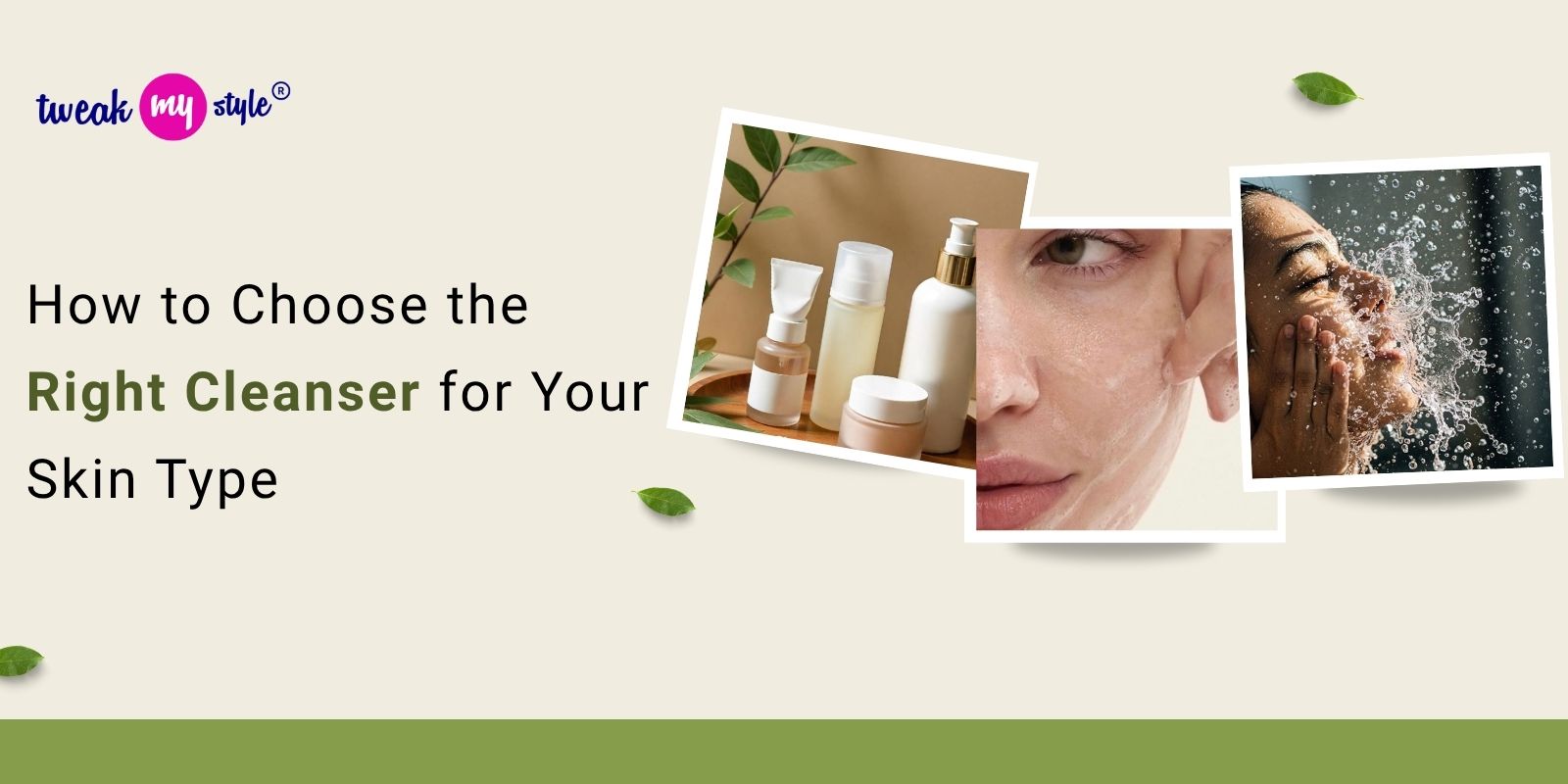Cleansing your face might seem straightforward – lather, rinse, repeat. But choosing the right cleanser is a crucial step in any skincare routine. It's the foundation upon which all other products build. Using the wrong cleanser can exacerbate existing problems like dryness, oiliness, acne, or sensitivity. This guide will break down skin types, explain cleanser ingredients, and provide specific recommendations to help you find your perfect match.
Why is Cleansing So Important?
Before we dive into the selection process, let's understand why cleansing is vital:
- Removes Dirt & Pollution: Daily life exposes your skin to pollutants, makeup, and environmental debris that can clog pores and lead to breakouts.
- Eliminates Excess Oil: For oily skin types, cleansing removes excess sebum that contributes to shine and blackheads.
- Prepares Skin for Treatments: A clean surface allows serums, moisturizers, and other treatments to penetrate more effectively.
- Maintains Skin Barrier Health: Gentle cleansing helps maintain the skin's natural barrier, protecting it from harmful external factors and preventing moisture loss.
Understanding Your Skin Type: The Foundation of Cleanser Selection
Knowing your skin type is the most critical factor in choosing the right cleanser. Here's a detailed breakdown:
- Normal Skin: Often described as “balanced,” normal skin isn't excessively oily or dry. It generally has a healthy glow, minimal blemishes, and small pores. It's often considered the “lucky” skin type.
- Cleanser Needs: Gentle, hydrating cleansers are ideal. Look for ingredients like glycerin, hyaluronic acid, or ceramides. Foaming cleansers are usually fine, but avoid anything overly harsh.
- Oily Skin: Characterized by excess sebum production, leading to a shiny appearance, enlarged pores, and a predisposition to breakouts (blackheads, whiteheads, pimples).
- Cleanser Needs: Cleansers that effectively remove excess oil without stripping the skin are essential. Look for ingredients like salicylic acid (BHA) for exfoliation, clay to absorb oil, or tea tree oil for its antibacterial properties. However, avoid harsh sulfates (like SLS) as these can over-dry the skin, triggering more oil production.
- Dry Skin: Experiences tightness, flakiness, and a rough texture. It's prone to irritation and may be more sensitive. Dry skin lacks moisture and oil, and its barrier function is often compromised.
- Cleanser Needs: Hydrating and creamy cleansers are a must. Ingredients like ceramides, hyaluronic acid, shea butter, and plant oils (e.g., avocado oil, jojoba oil) will help replenish moisture. Avoid foaming cleansers and those containing harsh sulfates.
- Combination Skin: A mix of oily and dry areas, typically with an oily T-zone (forehead, nose, and chin) and drier cheeks.
- Cleanser Needs: A balanced approach is key. You might need to rotate cleansers, using a more oil-controlling cleanser for the T-zone and a hydrating cleanser for drier areas. Gel cleansers or gentle foaming cleansers can work well.
- Sensitive Skin: Easily irritated, prone to redness, itching, and reactions to certain ingredients. Sensitive skin often overlaps with other skin types.
- Cleanser Needs: Hypoallergenic, fragrance-free, and non-comedogenic (won't clog pores) cleansers are essential. Look for soothing ingredients like aloe vera, chamomile, or oat extract. Always patch test new products.
Decoding Cleanser Ingredients: What to Look For (and Avoid)
Beyond skin type, understanding common cleanser ingredients is crucial.
Good Ingredients to Look For:
Hyaluronic Acid: A humectant that attracts and retains moisture.
Ceramides: Lipids that help repair and strengthen the skin barrier.
Glycerin: A humectant that draws moisture from the air.
Salicylic Acid (BHA): An exfoliant that helps unclog pores and reduce breakouts (ideal for oily/acne-prone skin).
Glycolic Acid (AHA): An exfoliant that brightens skin and reduces fine lines (use with caution, especially on sensitive skin).
Tea Tree Oil: An antibacterial ingredient that can help with acne.
Aloe Vera: Soothes and calms irritated skin.
Niacinamide: Reduces redness, inflammation, and pore size.
Squalane: A moisturizing oil that mimics the skin's natural oils.
Ingredients to Avoid (Especially if You Have Sensitive Skin):
Sulfates (SLS/SLES): Harsh detergents that can strip the skin of its natural oils.
Fragrance (Synthetic): A common irritant.
Alcohol (Denatured): Can be drying and irritating.
Essential Oils (High Concentration): Can cause allergic reactions or photosensitivity in some individuals.
Harsh Exfoliants (Scrubs with Microplastics): Can cause micro-tears in the skin. (Opt for chemical exfoliants instead)
Cleanser Types: A Quick Guide
- Foaming Cleansers: Effective at removing oil and makeup. Best for oily skin, but can be drying for dry/sensitive skin.
- Gel Cleansers: Often lightweight and refreshing. Suitable for oily, combination, and normal skin.
- Cream Cleansers: Gentle and hydrating. Ideal for dry and sensitive skin.
- Oil Cleansers: Dissolve makeup and impurities without stripping the skin. Can be used as a first cleanse (double cleansing). Suitable for all skin types.
- Micellar Water: A gentle option for removing makeup and dirt. Can be used as a cleanser or toner. Generally safe for all skin types.
- Clay Cleansers: Absorb excess oil and impurities. Best for oily or acne-prone skin.
Double Cleansing: Why You Should Consider It
Double cleansing involves using two different cleansers – typically an oil-based cleanser followed by a water-based cleanser. This is particularly beneficial for:
- Removing Makeup Thoroughly: Oil cleansers effectively dissolve makeup, including waterproof formulas.
- Deep Cleaning Pores: The combination removes impurities that water alone might miss.
- Boosting Skincare Product Absorption: A clean surface allows subsequent products to penetrate better.
Patch Testing is KEY!
Before incorporating any new cleanser into your routine, always perform a patch test. Apply a small amount of the cleanser to a discreet area of skin (like behind your ear or on your inner arm) and wait 24-48 hours to check for any adverse reactions (redness, itching, irritation).
Conclusion: Your Skin's Happy Place Awaits!
Choosing the right cleanser is an ongoing journey. Your skin’s needs can change with the seasons, hormonal fluctuations, or environmental factors. Pay attention to how your skin feels and adjust your cleanser accordingly. With a little experimentation and mindful selection, you can unlock your skin's natural radiance and achieve a healthy, balanced complexion.















Share this post on: